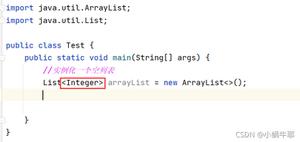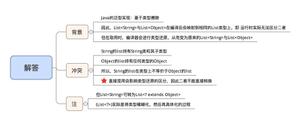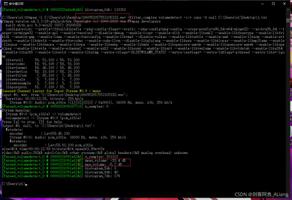Java创建有界的泛型类
示例
您可以通过限制类定义中的类型来限制通用类中使用的有效类型。给定以下简单的类型层次结构:
public abstract class Animal { public abstract String getSound();
}
public class Cat extends Animal {
public String getSound() {
return "Meow";
}
}
public class Dog extends Animal {
public String getSound() {
return "Woof";
}
}
如果没有有界的泛型,我们就不能创建既是泛型又知道每个元素都是动物的容器类:
public class AnimalContainer<T> { private Collection<T> col;
public AnimalContainer() {
col = new ArrayList<T>();
}
public void add(T t) {
col.add(t);
}
public void printAllSounds() {
for (T t : col) {
// 非法,类型T没有makeSound()
// 它在这里用作java.lang.Object
System.out.println(t.makeSound());
}
}
}
通过类定义中的泛型绑定,现在可以做到这一点。
public class BoundedAnimalContainer<T extends Animal> { // 请注意此处。 private Collection<T> col;
public BoundedAnimalContainer() {
col = new ArrayList<T>();
}
public void add(T t) {
col.add(t);
}
public void printAllSounds() {
for (T t : col) {
// 现在有效,因为T正在扩展Animal
System.out.println(t.makeSound());
}
}
}
这也限制了泛型类型的有效实例化:
// 法律AnimalContainer<Cat> a = new AnimalContainer<Cat>();
// 法律
AnimalContainer<String> a = new AnimalContainer<String>();
// 法律 because Cat extends AnimalBoundedAnimalContainer<Cat> b = new BoundedAnimalContainer<Cat>();
// 非法,因为String不能扩展Animal
BoundedAnimalContainer<String> b = new BoundedAnimalContainer<String>();
以上是 Java创建有界的泛型类 的全部内容, 来源链接: utcz.com/z/321330.html









